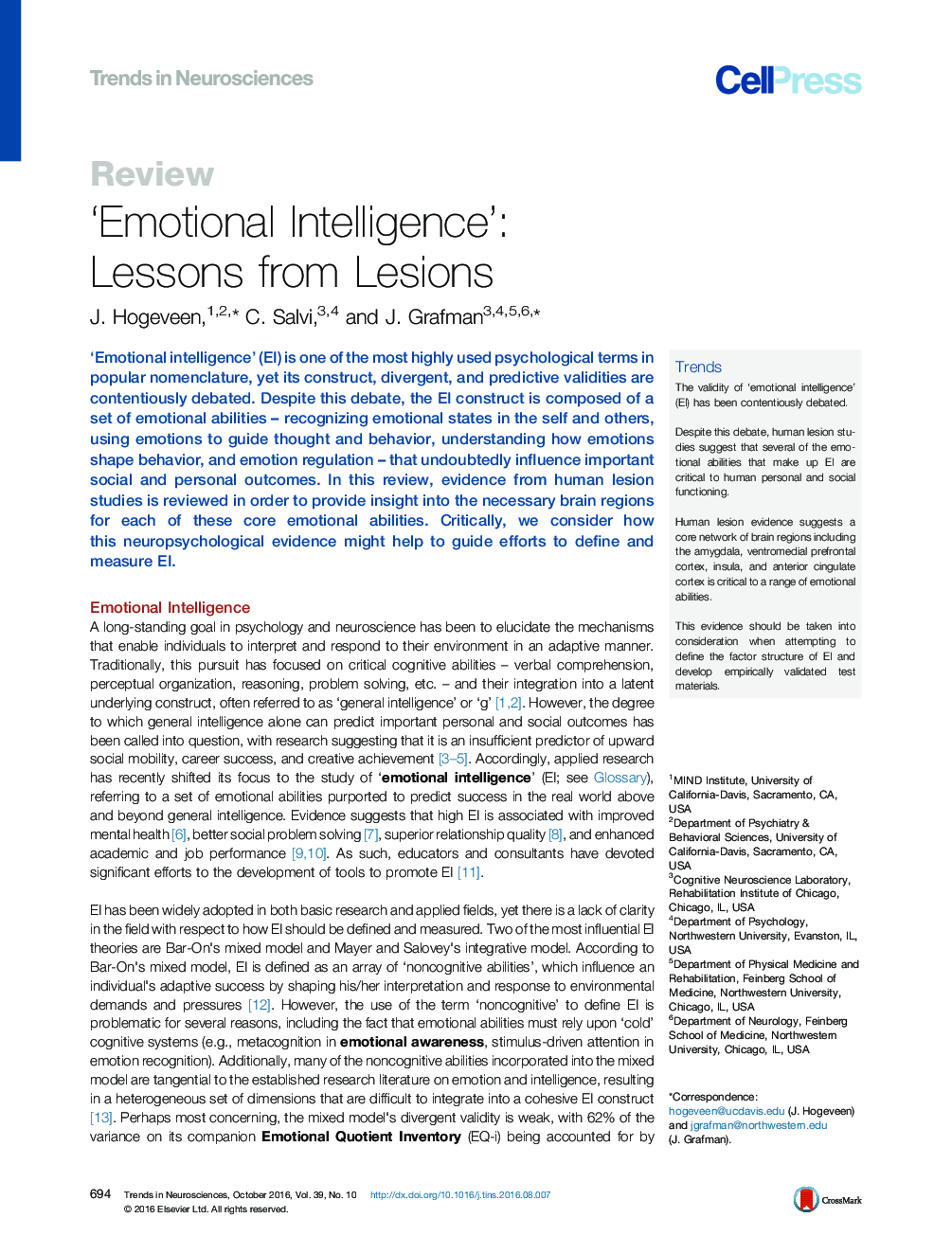| Article ID | Journal | Published Year | Pages | File Type |
|---|---|---|---|---|
| 4354082 | Trends in Neurosciences | 2016 | 12 Pages |
‘Emotional intelligence’ (EI) is one of the most highly used psychological terms in popular nomenclature, yet its construct, divergent, and predictive validities are contentiously debated. Despite this debate, the EI construct is composed of a set of emotional abilities – recognizing emotional states in the self and others, using emotions to guide thought and behavior, understanding how emotions shape behavior, and emotion regulation – that undoubtedly influence important social and personal outcomes. In this review, evidence from human lesion studies is reviewed in order to provide insight into the necessary brain regions for each of these core emotional abilities. Critically, we consider how this neuropsychological evidence might help to guide efforts to define and measure EI.
TrendsThe validity of ‘emotional intelligence’ (EI) has been contentiously debated.Despite this debate, human lesion studies suggest that several of the emotional abilities that make up EI are critical to human personal and social functioning.Human lesion evidence suggests a core network of brain regions including the amygdala, ventromedial prefrontal cortex, insula, and anterior cingulate cortex is critical to a range of emotional abilities.This evidence should be taken into consideration when attempting to define the factor structure of EI and develop empirically validated test materials.
